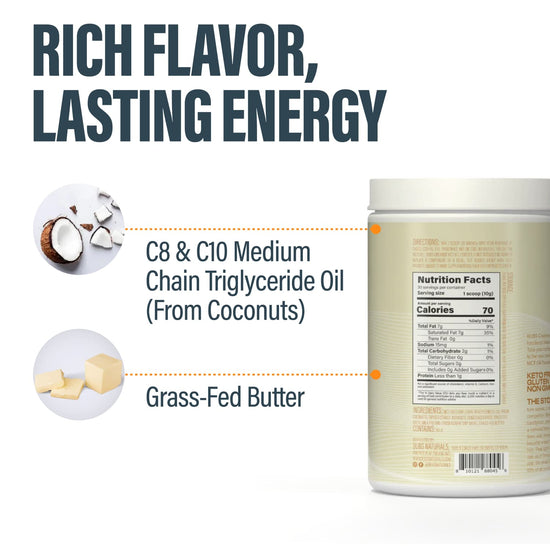Table of Contents
- Introduction
- Understanding MCT Oil
- Signs of Rancidity in MCT Oil
- Storage Tips to Extend Shelf Life
- What to Do with Rancid MCT Oil
- Conclusion
- FAQ
Introduction
If you've ever opened your pantry and hesitated before reaching for that bottle of MCT oil, you're not alone. Many of us have experienced that nagging question: Is this oil still good? MCT (medium-chain triglyceride) oil has surged in popularity, particularly among those following ketogenic diets, fitness enthusiasts, and individuals seeking to enhance their wellness. However, with its increasing use comes an equally important concern: how to tell if MCT oil is rancid and unfit for consumption.
Rancidity in oils is a natural process that occurs when they are exposed to air, light, or heat, leading to oxidation and degradation. Understanding how to recognize rancidity not only ensures that we maintain the quality of our MCT oil but also helps us avoid potential adverse effects from spoiled products.
In this blog post, we will delve deep into the characteristics of MCT oil, the factors that influence its shelf life, and most importantly, how to determine if your MCT oil has gone bad. We’ll also touch upon the best practices for storage to maximize freshness, ensuring that our adventures in wellness remain as seamless as possible.
By the end of this post, you’ll have a clear understanding of MCT oil, how to identify signs of spoilage, and the best ways to store it for optimal use. So, let’s embark on this journey together and uncover the secrets behind maintaining the integrity of our beloved MCT oil!
Understanding MCT Oil
MCT oil is derived from medium-chain triglycerides, which are a type of fat that is rapidly absorbed and utilized by the body for energy. Unlike long-chain triglycerides (LCTs), MCTs can bypass the digestive tract and enter the bloodstream more quickly, making them a popular choice for those seeking quick energy boosts or for those following a ketogenic lifestyle.
What Makes MCT Oil Unique?
- Rapid Absorption: MCTs are metabolized differently than LCTs, providing immediate energy without being stored as fat.
- Health Benefits: MCT oil has been linked to various wellness benefits, such as enhanced cognitive function, improved athletic performance, and support for weight management.
At BUBS Naturals, we pride ourselves on providing high-quality, clean MCT oil that supports our commitment to adventure and wellness. Our MCT Oil Powder is keto-friendly and perfect for fueling your active lifestyle, whether you’re blending it into your morning coffee or adding it to a smoothie.
Signs of Rancidity in MCT Oil
Identifying whether your MCT oil is rancid involves using your senses—primarily sight, smell, and taste. Here are the key indicators to watch for:
1. Odor
MCT oil should have a neutral aroma. If you detect any unpleasant or “off” smells—think sour or rancid—this is a strong indication that the oil has gone bad. Fresh MCT oil should not have a strong scent; if it does, it’s best to err on the side of caution and dispose of it.
2. Taste
A good practice when checking the freshness of MCT oil is to take a small taste. It should have a mild, almost flavorless profile. If the taste is sharp, bitter, or uncharacteristically strong, the oil is likely rancid and should not be consumed.
3. Color and Clarity
Fresh MCT oil is typically clear and colorless. If you notice a yellowish tint or any dark spots, this may indicate spoilage. Rancid oils can also develop cloudiness, which is a sign that the oil has degraded.
4. Consistency
MCT oil has a smooth and fluid consistency similar to that of olive oil. If it appears thick, sticky, or lumpy, it’s a sign of spoilage. Properly stored MCT oil should remain in a liquid state, even at cooler temperatures.
5. Packaging Integrity
Always check the bottle for any signs of damage. If the seal is broken or the cap is loose, air may have entered, accelerating the oxidation process.
Storage Tips to Extend Shelf Life
To ensure our MCT oil remains fresh for as long as possible, proper storage is essential. Here are our top tips for storing MCT oil effectively:
1. Keep It Cool and Dark
Store MCT oil in a cool, dry place away from direct sunlight. A pantry or cupboard is ideal. Avoid placing the bottle near heat sources like stoves or ovens, as heat can accelerate rancidity.
2. Seal Tightly
Always ensure the bottle is tightly sealed after each use to minimize exposure to air. This simple action can significantly prolong the life of your MCT oil.
3. Refrigeration
While MCT oil does not necessarily need to be refrigerated, doing so can help extend its shelf life, especially in warmer climates. However, it’s important to note that pure MCT oil should not solidify in the fridge.
4. Check the Best-By Date
Most MCT oils come with a best-by date, which indicates the period during which the oil is expected to retain optimal quality. While oil can often remain usable beyond this date, its freshness and flavor may begin to diminish.
What to Do with Rancid MCT Oil
If you’ve determined that your MCT oil is rancid, it’s important to dispose of it properly. Using rancid oil can lead to unpleasant flavors in your dishes and may potentially cause digestive discomfort. Here are some eco-friendly ways to handle it:
- Disposal: Pour the rancid oil into a container and seal it before discarding it in the trash to avoid leakage.
- Repurpose: If you’re hesitant to waste the oil, consider using it as a carrier oil for essential oils or in DIY skincare products, but only if the rancidity is mild and tolerable.
Conclusion
Understanding how to tell if MCT oil is rancid is crucial for maintaining both the quality of our ingredients and our overall wellness. By using our senses and following proper storage techniques, we can ensure that our MCT oil remains fresh and effective for our health and lifestyle needs.
At BUBS Naturals, we are dedicated to providing high-quality, clean supplements that support your wellness journey. We invite you to explore our MCT Oil Powder and see how it can enhance your daily routine. Remember, freshness is key, so keep an eye on your oils, and embrace the adventure of wellness with confidence!
FAQ
How long does MCT oil last?
MCT oil typically has a shelf life of about 2 years when unopened. Once opened, it can last up to 1 year if stored properly.
Does MCT oil need to be refrigerated?
MCT oil does not need to be refrigerated, but doing so can help prolong its freshness, especially in warmer environments.
What should I do if my MCT oil smells bad?
If your MCT oil has an off smell, taste, or appearance, it’s best to discard it to avoid consuming rancid oil.
Can I use rancid MCT oil for cooking?
It’s not advisable to use rancid oil for cooking, as it can impart unpleasant flavors and may cause digestive discomfort. Always prioritize freshness for the best health outcomes.
Where can I buy high-quality MCT oil?
You can explore our range of high-quality MCT products at BUBS Naturals, where we offer clean and functional supplements to support your wellness journey.
Written by:
Bubs Naturals

Butter MCT Oil Creamer
BUBS Butter MCT Oil Creamer (formerly Halo Creamer): Scientifically-Backed Brain and Body Fuel
BUBS Butter MCT Oil Creamer is your go-to for clean, fast-acting energy and focus, no crash included. It blends creamy grass-fed butter with fast-acting MCT oil powder (C8 and C10) to kickstart your day and keep you sharp. The MCTs go straight to work, giving your brain a quick boost while the grass-fed butter supports digestion and gut health.
Together, they help curb cravings, keep you feeling full longer, and support steady energy throughout the day—perfect for fueling your mornings or powering through the afternoon slump.
Starts at $36.00
Shop

